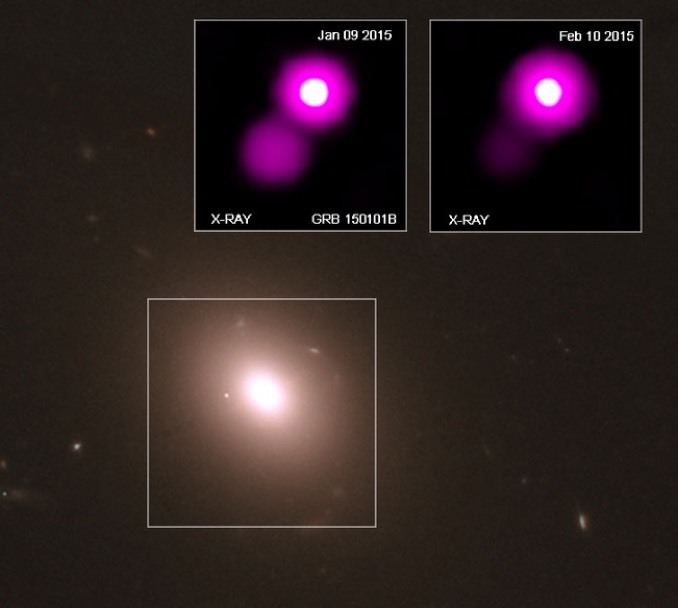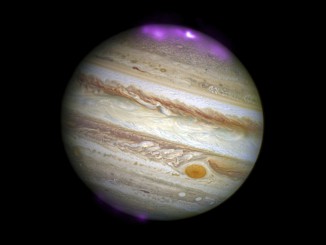
Astronomers using a battery of space and ground-based telescopes to study the aftermath of a gamma ray burst known as GRB 150101B say the explosion may have been triggered by the catastrophic merger of two neutron stars. The gamma ray burst shares “remarkable similarities” with a similar merger detected in 2017 by gravitational waves.
GRB 150101B was discovered in 2015 by NASA’s Fermi Gamma-ray Space Telescope. Follow-up observations by Chandra, Hubble, the Discovery Channel Telescope, the Neil Gehrels Swift Observatory and others show GRB 150101B and its younger cousin, known as GW170817, may represent a new class of erupting bodies that turn on and off in X-rays.
Researchers believe both were formed when two neutron stars merged, generating narrow jets of high-energy particles that briefly produced short, intense bursts of gamma rays. As seen in the 2017 event, such mergers also generate gravitational waves, which can be visualised as ripples in the fabric of spacetime.
Gravitational waves were not detected in the 2015 event, but that is probably because GRB 150101B is much more distant, some 1.7 billion light years away compared to 130 million light years for the object discovered by the Advanced Laser Interferometer Gravitational Wave Observatory (LIGO) and its European counterpart Virgo.
“It is possible that a few mergers like the ones seen in GW170817 and GRB 150101B had been detected as short GRBs before but had not been identified with other telescopes,” NASA said in a release describing the observations. “Without detections at longer wavelengths like X-rays or optical light, GRB positions are not accurate enough to determine what galaxy they are located in.”
A paper describing the observations appears in the October 16, 2018, issue of the journal Nature Communications.



